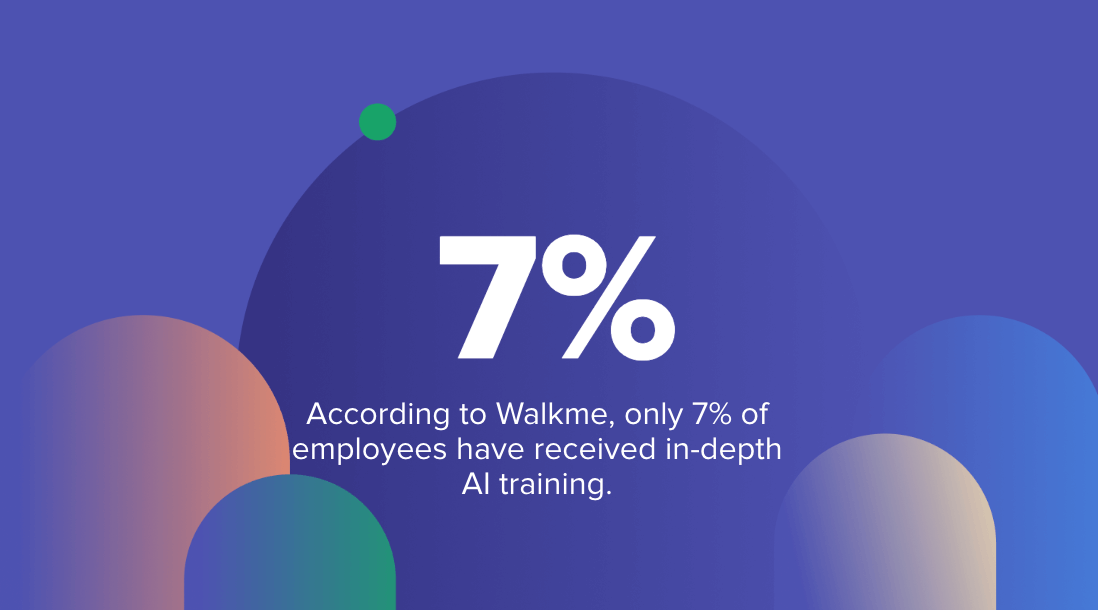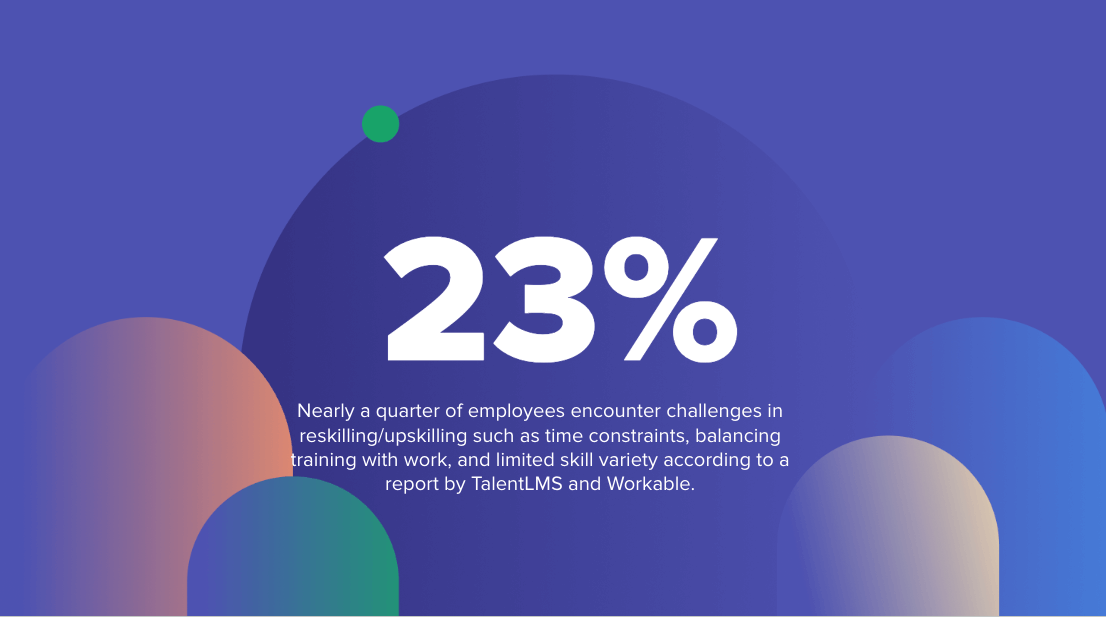Bridging the AI confidence gap: Key steps for HR to lead the way
Artificial intelligence (AI) isn’t just for tech wizards anymore—it’s quickly becoming a core part of modern work. But let’s face it, AI can feel overwhelming for many. Recent studies show that a lot of employees aren’t sure how to use AI tools, and this uncertainty is hurting their productivity and confidence. It’s time to help bridge this gap and get everyone up to speed.

While AI is designed to make work easier, Upwork reports that 77% of workers feel it’s actually increasing their workloads. This disconnect can create anxiety, leaving employees unsure of how to leverage AI to their advantage. As a result, the confidence gap is widening.
But there’s good news: HR professionals can step in to close this gap, helping their teams build AI confidence and embrace this powerful tool.
Contents
The confidence gap with AI
It’s no secret that AI adoption has outpaced employee readiness. A lot of workers feel unsure about how to integrate AI into their daily tasks. According to Walkme, only 7% of employees have received in-depth AI training. This lack of support leaves many feeling overwhelmed, especially as AI tools become more common across industries.

The confidence gap is real, and it’s HR’s job to bridge that divide. By providing the right resources and training, HR can empower employees to feel confident using AI, turning a potential source of stress into a key productivity driver.
Key AI Skills to build confidence
To help employees thrive with AI, you’ll need to focus on a few key skills. These will ensure they’re equipped to use AI effectively in their roles and reduce any feelings of uncertainty.
AI basics: Start by demystifying AI. Employees should understand what AI is, how it works, and how it applies to their specific jobs. This foundational knowledge helps remove the “unknown” factor that often leads to anxiety.
Take ChatGPT, for example: the way you phrase your prompt and describe your problem is crucial to the answer you receive.
Data literacy: AI is all about data. Employees need to be comfortable analyzing and interpreting data to inform decisions. As Psico-Smart points out, data literacy is a must-have skill for the modern workforce, especially when AI is in play.
AI tool proficiency: Give employees hands-on experience with the tools they’ll be using. Whether it’s AI-driven automation, chatbots, or data analytics platforms, familiarizing workers with these tools will help them feel more in control—and more productive.
How HR can lead the charge
HR plays a crucial role in helping employees overcome their AI-related fears. By offering the right support and creating a culture of learning, HR can turn AI skeptics into AI champions.
Create AI training programs: Team up with IT and Learning & Development (L&D) to build targeted AI training sessions. These programs should cover both the technical side of AI and the mindset shift required to fully embrace the technology.
According to Advantage Performance, learning pathways that offer hands-on experimentation are particularly effective.

Offer safe spaces to learn: 23% of employees encounter challenges such as time constraints, balancing training with work, and limited skill variety according to a report by TalentLMS and Workable.
Provide employees with opportunities to test out AI tools in a risk-free environment. By using “sandbox” spaces or simulations, workers can practice using AI without the pressure of real-time performance. This builds confidence and allows them to experiment freely.
Leadership support: Leaders should model the use of AI in their own roles. When employees see that AI can be used to enhance productivity and decision-making, they’ll be more likely to follow suit. HR can work closely with leadership to ensure that AI adoption is a top-down initiative.
Shifting to an AI-ready mindset
Beyond technical skills, it’s important to cultivate an AI-ready mindset across your organization. Employees need to see AI as a tool that supports their work, not something that’s going to replace them.
By framing AI as a resource that enhances their roles, HR can help employees feel more comfortable embracing this technology.
Encouraging continuous learning is key to this mindset shift. HR can foster a culture of growth by promoting ongoing skill development and offering regular opportunities for employees to upskill.
Co-creating AI productivity goals
A lot of the stress around AI comes from unrealistic productivity expectations. Many employees feel they’re being asked to do more with AI without clear guidance on how to achieve these goals.
According to Upwork, nearly half of employees using AI don’t know how to meet their employers’ expectations for productivity.
To avoid this pitfall, HR can work with employees to co-create realistic, AI-driven productivity goals. Instead of focusing only on speed, these goals should also emphasize creativity, strategic thinking, and innovation.
By giving employees a say in how their productivity is measured, HR can help them feel more in control—and more confident in their ability to succeed with AI.
Wrapping it up
The future of work will be driven by AI, but success depends on how well employees can integrate these tools into their roles.
With HR leading the way, organizations can ensure that their teams don’t just keep up with AI—they thrive alongside it.
By empowering workers with the skills and confidence they need, HR can help their organizations unlock the full potential of AI, creating a more innovative, engaged, and productive workforce.
Frequently asked questions
- What is the confidence gap in AI?
- The confidence gap refers to the disconnect between the rapid adoption of AI and employees’ ability to effectively use these tools. Only 7% of workers have received in-depth AI training, leading to uncertainty and anxiety. HR can help close this gap by offering the necessary support and training.
- Why do workers feel overwhelmed by AI?
- While AI is meant to streamline tasks, 77% of workers feel it’s actually increasing their workloads. Many employees lack the skills or training to integrate AI into their roles, contributing to feelings of frustration and overwhelm. The solution lies in providing clear guidance and education on AI.
- How can HR help bridge the confidence gap?
- HR can provide targeted AI training, create safe spaces for employees to practice with AI tools, and foster a culture of continuous learning. By equipping employees with the right skills and mindset, HR can help close the confidence gap and transform AI from a source of stress to a productivity driver.
- What skills are necessary to close the confidence gap in AI?
- Key skills include understanding AI basics, data literacy, and proficiency with AI tools. Providing hands-on experience and training in these areas will empower employees to feel more confident using AI, helping them integrate these tools into their daily tasks and reducing anxiety around AI adoption.
- How can companies ensure AI boosts productivity, not stress?
- Co-creating realistic, AI-driven productivity goals is crucial. HR can work with employees to set expectations that balance efficiency with creativity and innovation. By involving employees in this process, organizations can avoid unrealistic demands and build confidence in AI’s potential to enhance, rather than overwhelm, their work.




